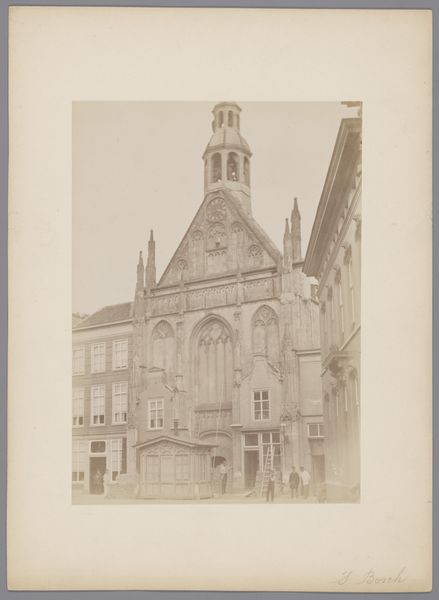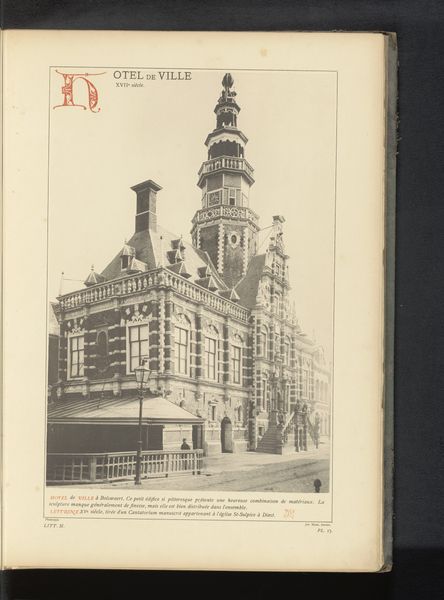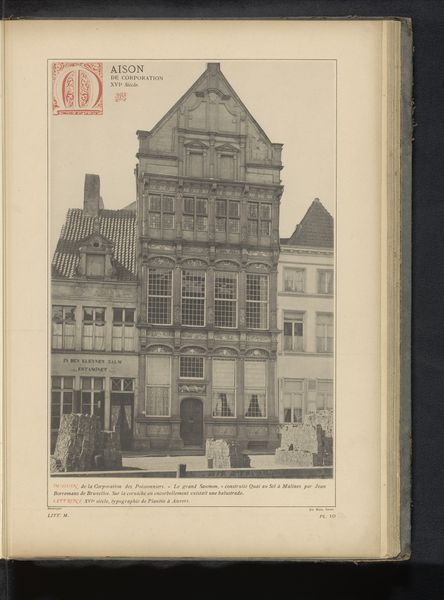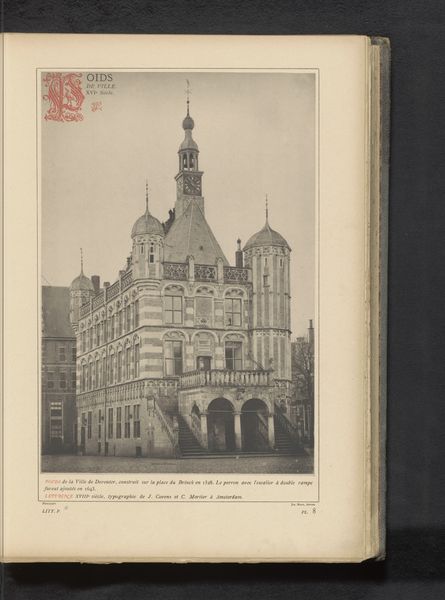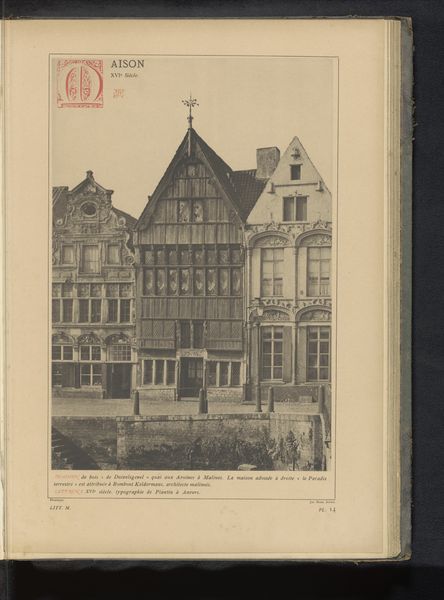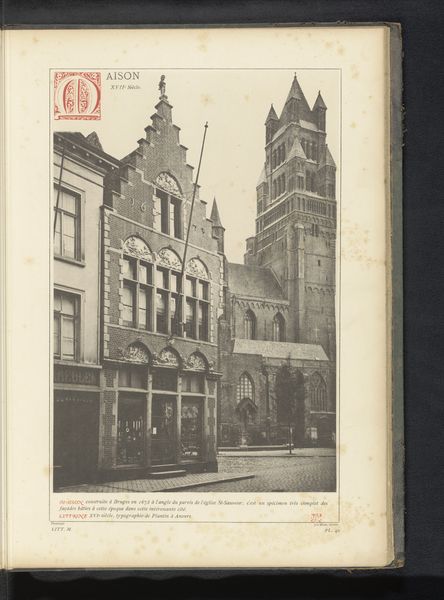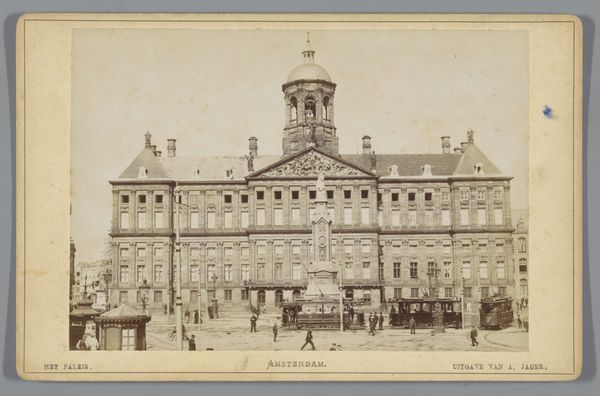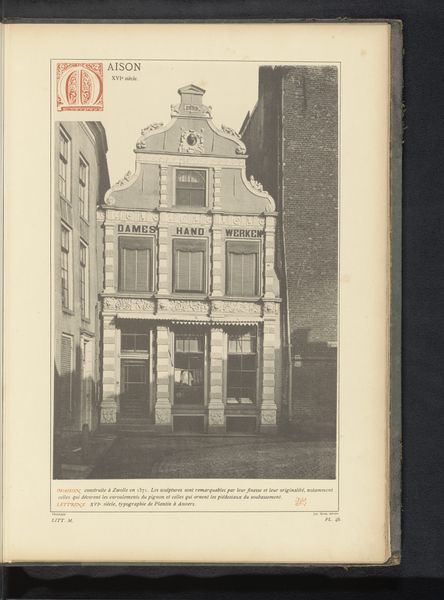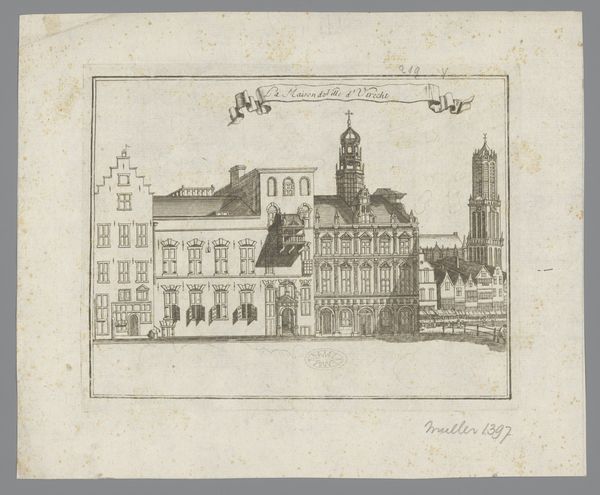
drawing, print, paper, ink, architecture
#
drawing
#
dutch-golden-age
# print
#
paper
#
ink
#
cityscape
#
watercolor
#
architecture
#
realism
Dimensions: height 441 mm, width 293 mm
Copyright: Rijks Museum: Open Domain
Editor: So, here we have an 1891 print called "Gevel van het gebouw van verzekeringsmaatschappij New York in Amsterdam"—roughly translated, it means 'Facade of the New York Insurance Company Building in Amsterdam'. It's ink on paper, depicting a cityscape, and I'm struck by how modern it feels for something from the late 19th century. What jumps out at you? Curator: Well, I think that feeling of modernity is precisely what makes it so compelling. Look at this representation of corporate power made visual. An American insurance company choosing to establish such a prominent building in Amsterdam speaks volumes about globalization and the shifting economic landscape of the late 19th century. Notice the emphasis on its height, its almost theatrical presence. Does it strike you as inherently Dutch? Editor: Not particularly. I see more of an international style, especially given the "New York" branding. It almost feels aspirational, as if Amsterdam is trying to align itself with a global financial center. Do you think that’s the intended effect? Curator: Precisely! This building wasn’t just about providing insurance; it was a statement about the growing influence of American capital and corporate culture. Think about the role of architecture at the time. It was about establishing institutional presence, physically manifesting power and stability. How would a Dutch audience in 1891 perceive this symbol? Editor: That's a really interesting point! I was focused on the image itself, but now I'm seeing how it signifies a larger story of cultural and economic exchange – or maybe even a power dynamic. I'd never considered it that way. Curator: Art like this challenges us to look beyond the aesthetic and consider the forces shaping society, which institutions create and project these images, and whose perspectives are included and excluded. It makes you wonder about the long-term effects of this type of architectural symbolism, doesn’t it? Editor: It certainly does. I'll definitely be approaching cityscapes with a different perspective now, considering not just what they depict, but also what they represent in terms of social and political forces.
Comments
No comments
Be the first to comment and join the conversation on the ultimate creative platform.
